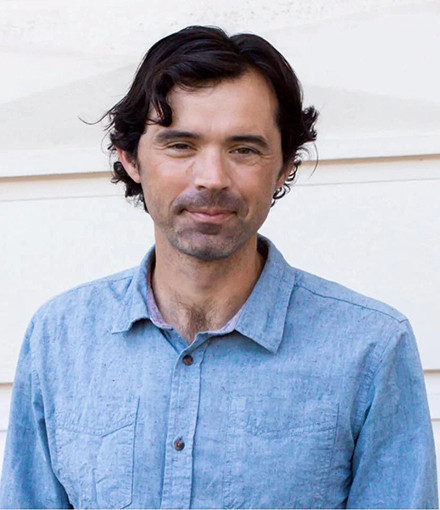
Gregory Perreault, PhD. (Photo courtesy of Dr. Perreault)
Dr. Gregory Perreault, associate professor of media literacy and analytics at the Zimmerman School of Advertising & Mass Communications in the USF College of Arts and Sciences, and his colleague recently examined one area of a newsroom that doesn’t get much research—how journalists evaluate their bosses.
“Given the current difficult working conditions many journalists face, newsroom leaders offer a key position to guide journalists through the field’s choppy waters,” Perreault said.
Drawing on interviews with 27 journalists working across the U.S. and in a range of positions within the newsroom, Perreault and Dr. Samuel M. Tham, assistant professor in the department of Journalism and Media Communication at Colorado State University, examined how journalists evaluate leadership and their leader’s employee expectations—specifically focusing in on the journalist’s current supervisor and their perspective of exemplary leadership.
Their research, “Effective leadership in journalism: Field theory in how journalists evaluate newsroom leadership,” has been published in Journalism.
“We know, of course, that journalism is a field which suffers from troubling experiences with personal wellbeing: journalists facing hostility and harassment from the audience, covering traumatic events, and working in precarious occupational situations,” Perreault said. “Dr. Tham and I expected that journalists would describe really terrible leaders—and some did—but for the most part journalists reflected on some remarkable leaders who helped them navigate the challenges of the journalistic field.”
Their findings revealed that journalists generally hold positive evaluations of their leaders.
“Journalists attributed great leadership to a mixture of strong cultural capital, for example, respect within the field, and strong journalistic expertise—and most journalists argued that they had effective leaders,” Perreault said.
What was a key sign of an effective newsroom leader according to their findings? That the newsroom leader could do the journalist’s job, Perreault explained. That said, journalists did not expect their immediate leadership in journalism could affect changes to their financial situations or their workload.
“Journalists' high evaluation of leadership did not reflect cushy positions within the field,” he said. “Far from it! Journalists reflected on the difficult working conditions shared throughout the field.”
Perreault explained that journalists in leadership roles often reflected on the roles their own early mentors “still played” in helping them navigate their roles.
“This speaks to the long legacy an effective leader can offer to their employees,” Perreault said. “We know leaders play an outsized role in setting the tone for a workplace. But we also know that leaders—in many fields really—are often untrained. I often liken it to sports: in many fields successful players who show success in football are promoted and then asked to play basketball.”
One practical takeaway, Perreault explained, is that one-on-one meetings between journalists and supervisors is “really important” and for both parties: “it helps early-career journalists get a sense of how their doing and it helps remind editors of the central reason many of them enter leadership: to mentor the future of the field.”
Perreault plans to continue his work on another wellbeing piece examining the labor and occupational precarity in small, rural newsrooms where journalists are often left alone to manage a very difficult job.
He also continues to partner with Dr. Tham and they have expanded their data collection from this project to examine public relations and advertising professionals’ leadership experiences as well—a separate research article he said he hopes to be able to share in the future.
“I hope that this [research] encourages workplaces to think more seriously about the importance of leadership and think about the training offered for leaders,” he said.
